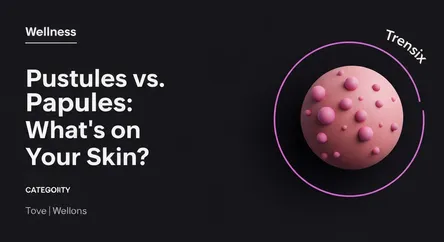Wellness
Pustules vs. Papules: What's on Your Skin?

Learn the key differences between papules and pustules to choose the right acne treatment and achieve clearer, healthier skin.
What is it?
Papules and pustules are both types of inflammatory acne, but they are not the same. A papule is a small, solid, red bump on the skin that can be tender to the touch. It doesn't contain pus. A pustule, on the other hand, is a small skin bump that contains yellowish fluid or pus. Pustules are essentially papules that have become infected, often appearing with a white or yellow center surrounded by red skin. Think of a papule as the initial inflamed bump, which can then develop into a pus-filled pustule.
Why is it trending?
The distinction between pustules and papules is trending due to a growing "skin-tellectual" movement. Consumers are increasingly educated about skincare ingredients and want to understand the specific nature of their blemishes to treat them more effectively. Instead of using a one-size-fits-all approach to "zits," people are learning to identify their acne type to select targeted treatments. This desire for precise skincare knowledge is amplified by dermatologists and influencers on social media, who empower followers to analyze their skin concerns for better results.
How does it affect people?
Knowing the difference empowers individuals to make smarter skincare choices. Papules, which are inflamed but not pus-filled, may respond best to anti-inflammatory ingredients. Pustules, characterized by a bacterial infection and pus, often require treatments with antibacterial properties, like benzoyl peroxide. Mistaking a papule for a pustule can lead to damaging behavior like trying to squeeze a bump that has no pus, which can worsen inflammation and lead to scarring. Correctly identifying the blemish allows for a more targeted, effective, and gentle treatment approach, ultimately leading to better skin health.